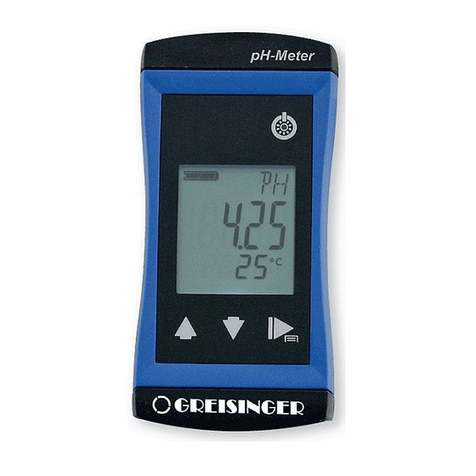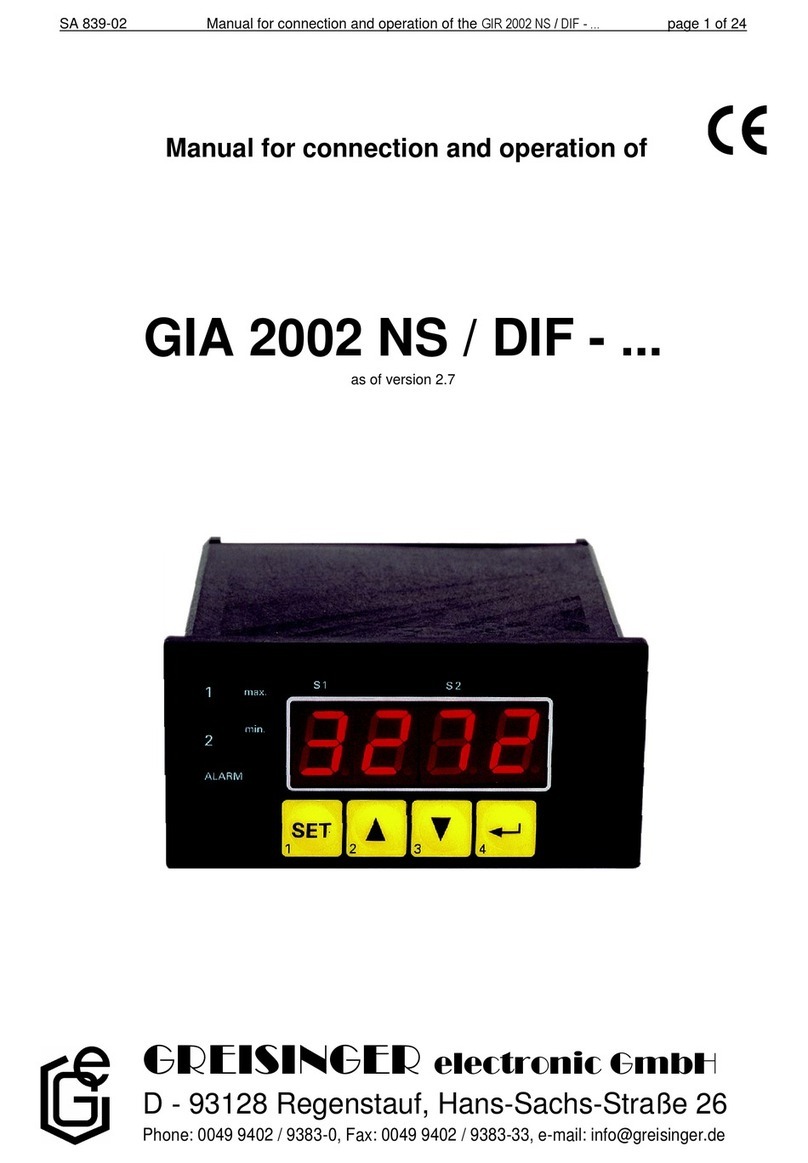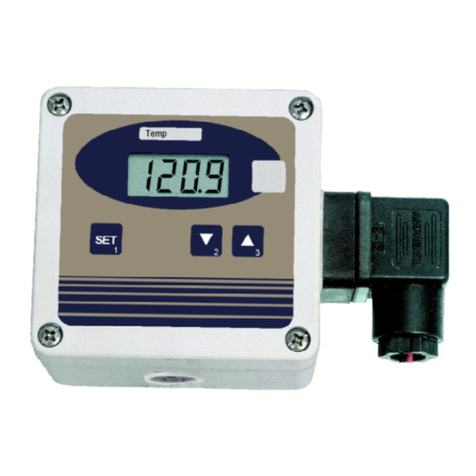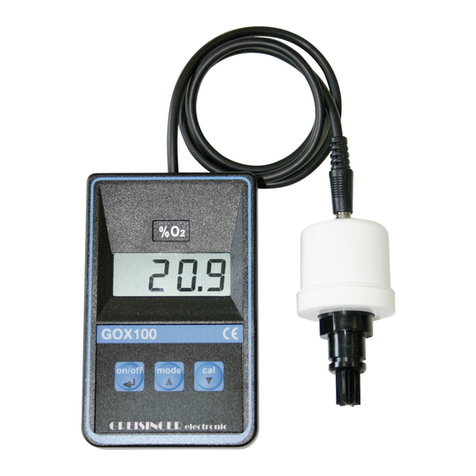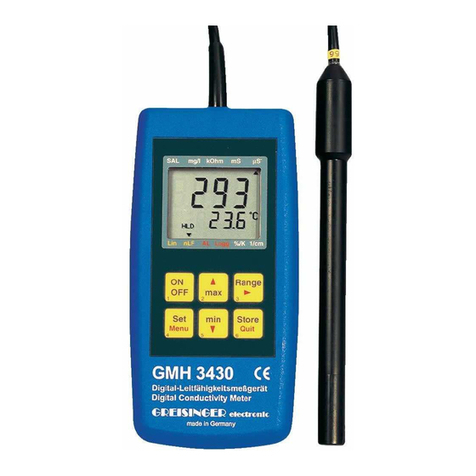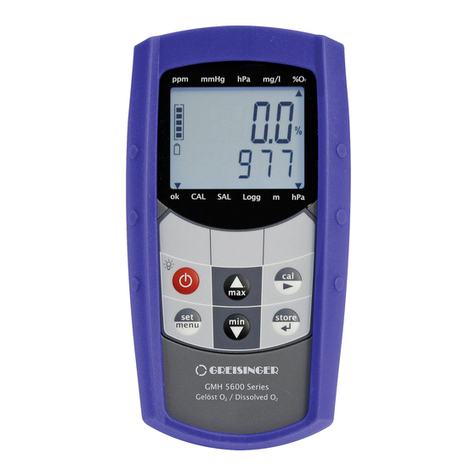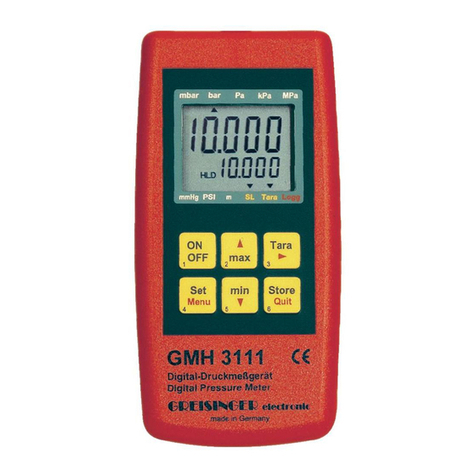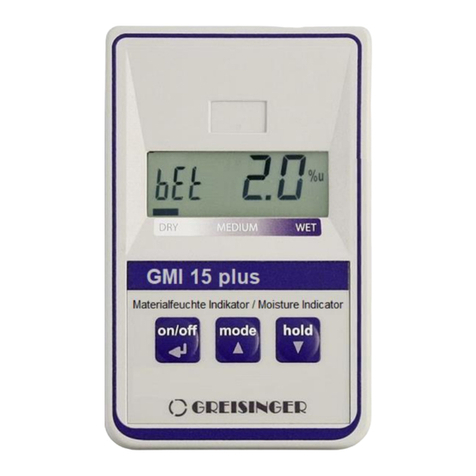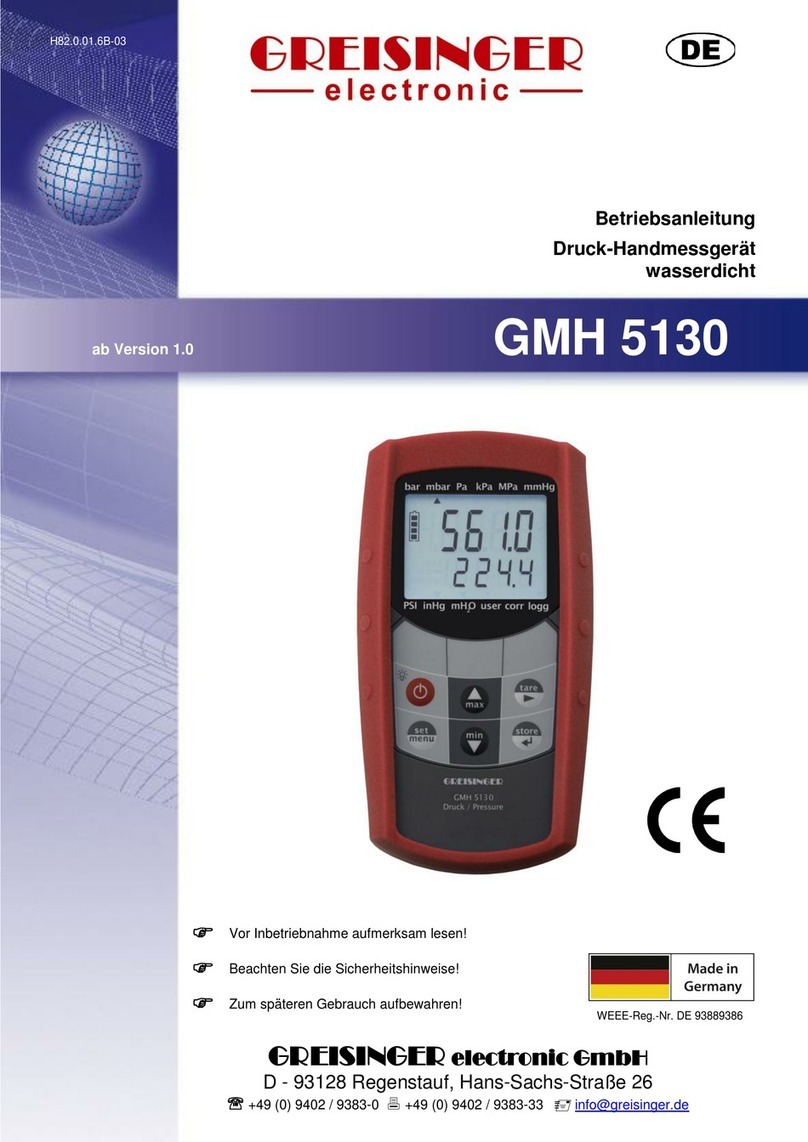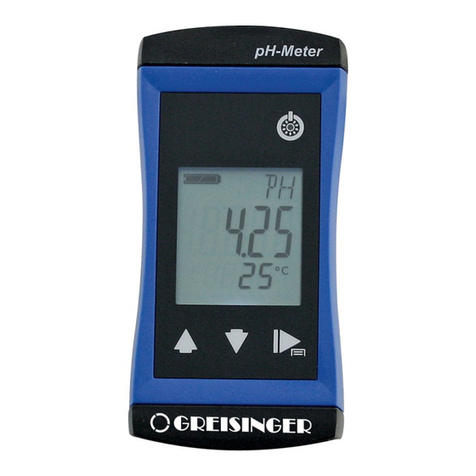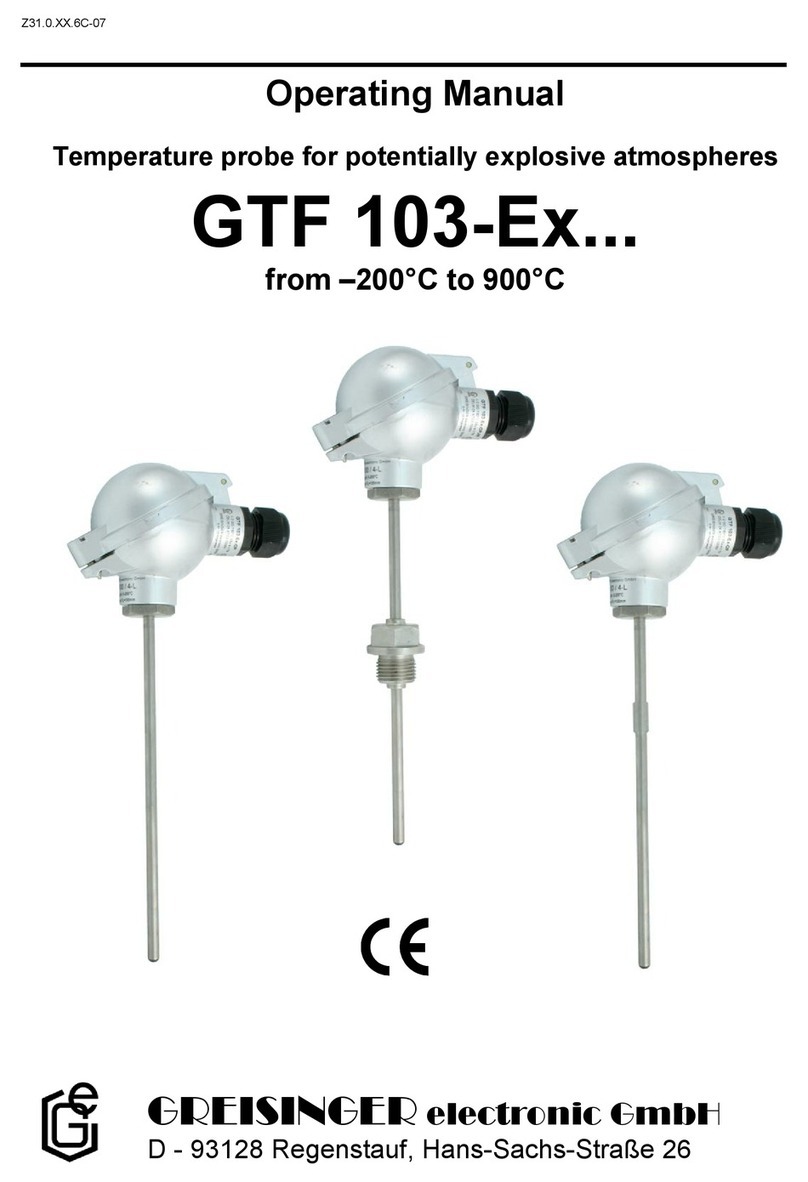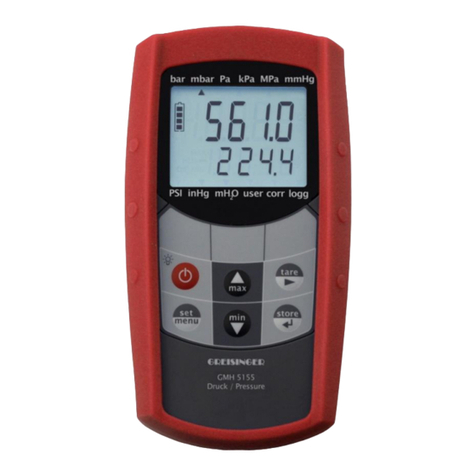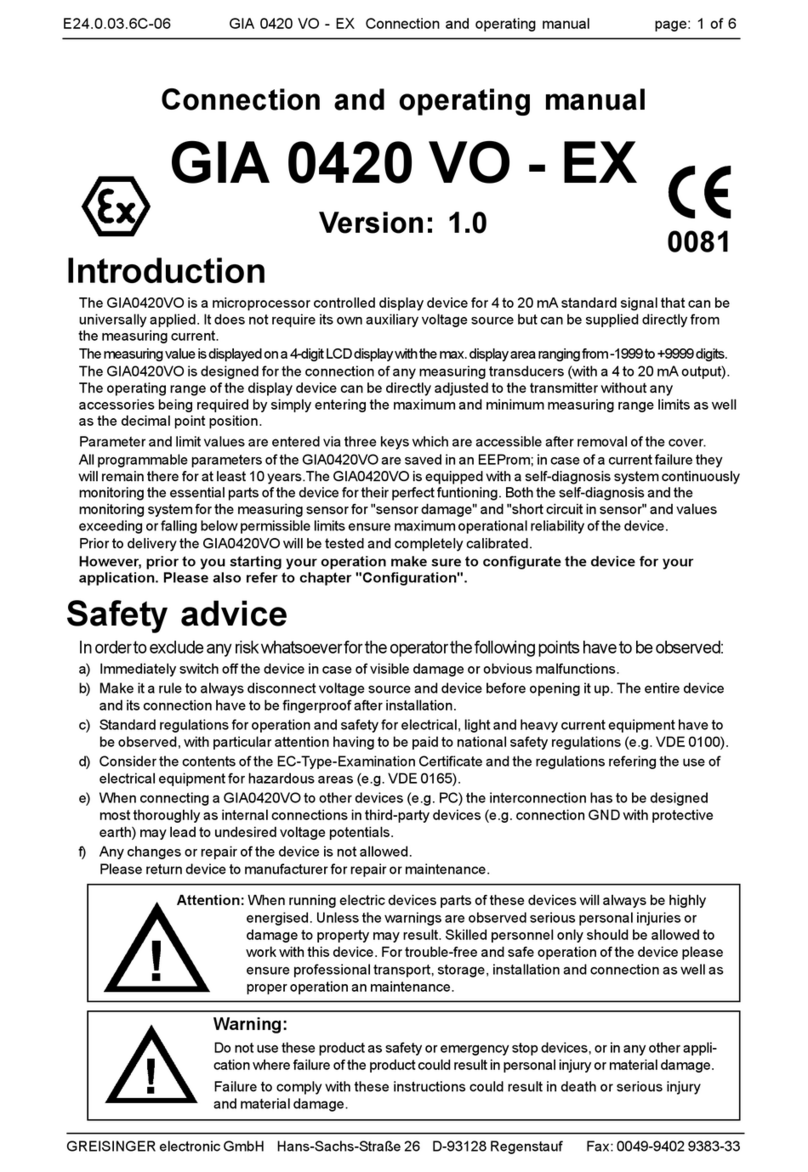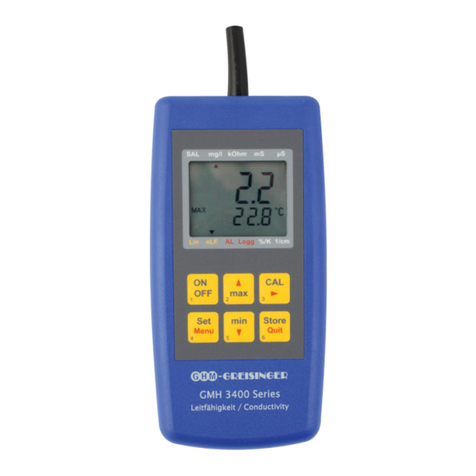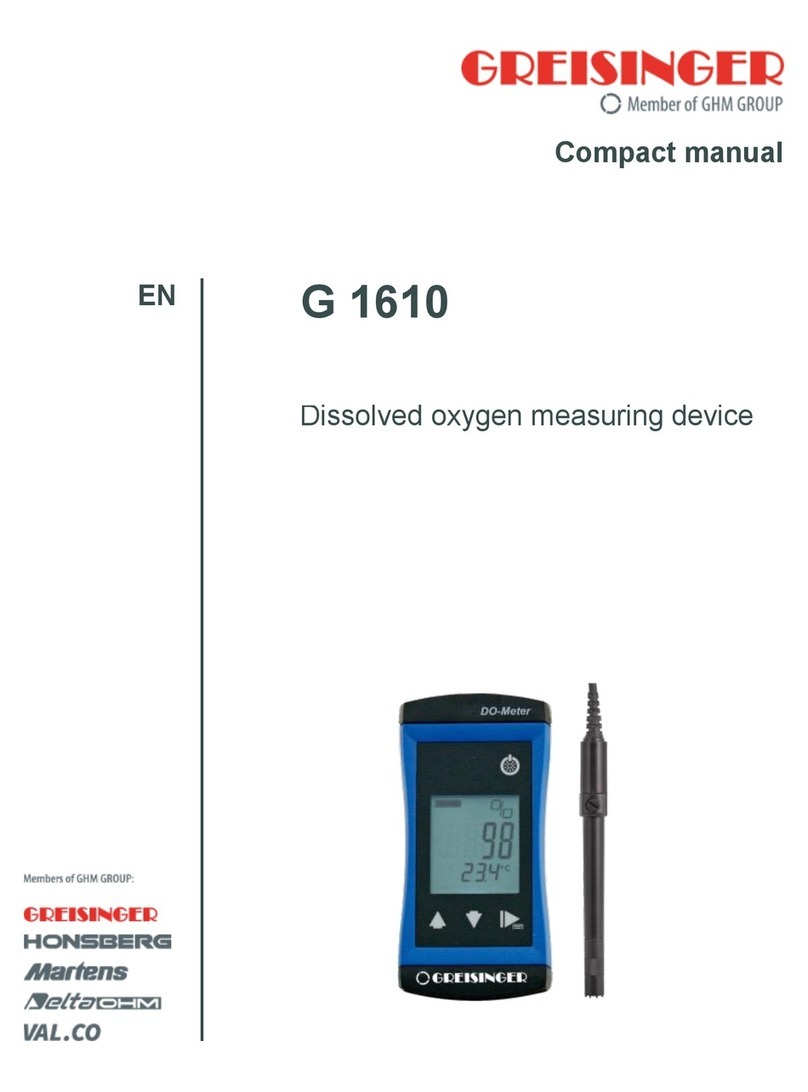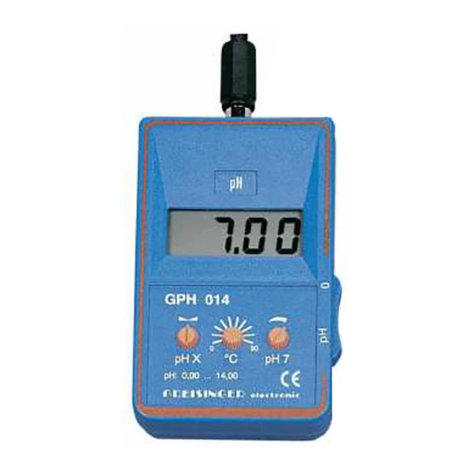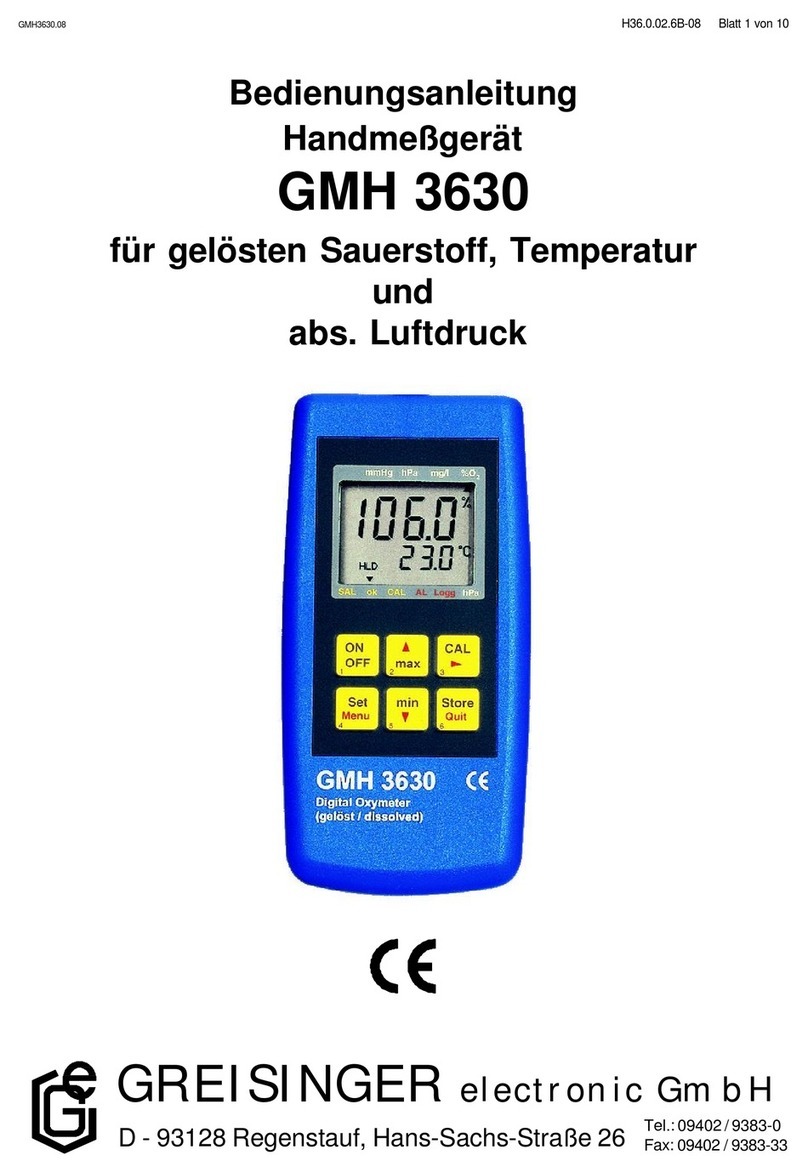H40.0.01.6C-03 page 2 of 10
2
3
1
321
How to Operate and Maintain Device:
a.) When to replace battery:
If
!
and ´bAt´ are shown in the lower display the battery has been used up and needs to be replaced. The device will, however,,
operate correctly for a certain time.
If ´bAt´is shown in the upper display the voltage is too low to operate the device; the battery has been completely used up.
Please note: We recommend to take out battery if device is not used for a longer period of time.
b) Treat device and sensor carefully. Use only in accordance with above specification. (do not throw, hit against etc.).
Protect plug and socket from soiling.
Only use the specified sensors (p.r.t. ´connections´). Connecting the instrument to others, may damaged the instrument and the
probe.
c) Switch off instrument to change sensors.
d) When connecting the TFS or STS - probe the connector may not lock correctly. In such case take the plug not at the casing but at
the buckling protection at the end of the plug. If plug is entered correctly, it will slide in smoothly.
e) To disconnect sensor/probe, the interface or the power supply device do not pull at the cable but at the plug.
f) Mains operation:
When using a power supply device please note that operating voltage has to be 10.5 to 12 V DC.
Do not apply overvoltage!! Cheap 12V-power supply devices often have excessive no-load voltage. We, therefore, recommend
using regulated voltage power supply devices. Trouble-free operation is guaranteed by our power supply GNG10/3000.
Prior to connecting the plug power supply device with the mains supply make sure that the operating voltage stated at the power
supply device is identical to the mains voltage.
Interface: Connection for electr. isolated interface adapter
(accessories: GRS 3100)
Safety Requirements:
This device has been designed and tested in accordance with the safety regulations for electronic devices.
However, its trouble-free operation and reliability cannot be guaranteed unless the standard safety measures and special
safety advises given in this manual will be adhered to when using the device.
1. Trouble-free operation and reliability of the device can only be guaranteed if the device is not subjected to any other climatic
conditions than those stated under "Specification".
2. If the device is transported from a cold to a warm environment condensation may cause in a failure of the function. In such a
case make sure the device temperature has adjusted to the ambient temperature before trying a new start-up.
3. If device is to be connected to other devices (e.g. via serial interface) the circuitry has to be designed most carefully. Internal
connection in third party devices (e.g. connection GND and earth) may result in not-permissible voltages impairing or destroying
the device or another device connected.
Warning: If device is operated with a defective mains power supply (short circuit from mains voltage to output voltage) this may
result in hazardous voltages at the device (e.g. sensor socket at interface).
4. If there is a risk whatsoever involved in running it, the device has to be switched off immediately and to be marked accordingly to
avoid re-starting.
Operator safety may be a risk if:
- there is visible damage to the device
- the device is not working as specified
- the device has been stored under unsuitable conditions for a longer time.
In case of doubt, please return device to manufacturer for repair and/or maintenance.
Connections
The mains socket is located at the left side of the measuring instrument.
Temperature input T2: Connection for NiCr-Ni-temperature
probe (type K) for surface temperature measurements etc.
Anschluß für NiCr-Ni Temperaturfühler (Typ K)
Connection for meas. probes: the following sensor types can
be connected:
-TFS 0100 (atmospheric humidity and temperature T1)
-STS 020 (flow speed air, 0..20.00m/s)
-STS 005 (flow speed water, 0..5.00m/s)
